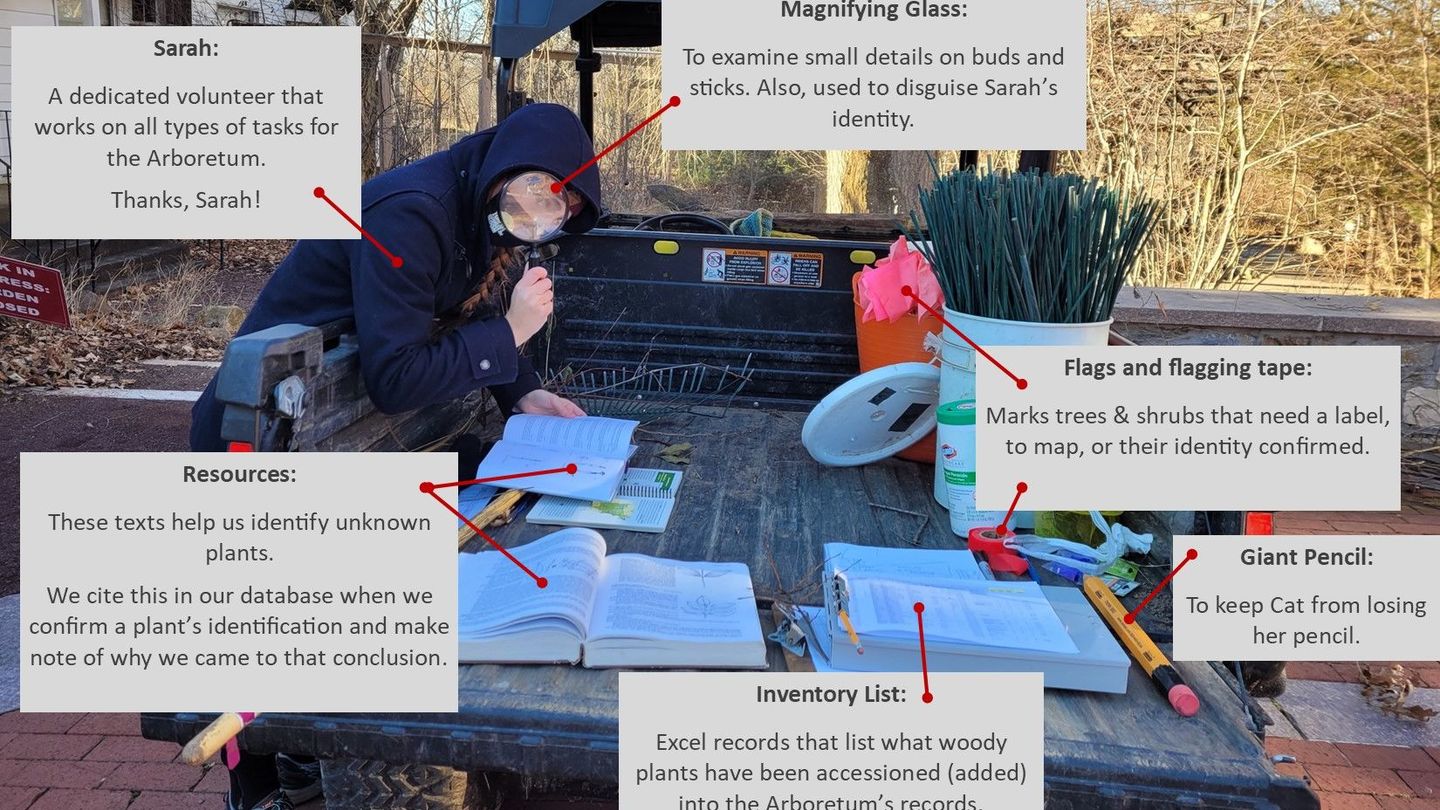
By Cat Meholic
Curatorial Horticulturist, Ambler Arboretum of Temple University
One of the main differences between a public garden and a public park is the existence of a documented plant collection to support the mission of the garden. Superficially, some public parks look like gardens and some public gardens have a park-like aesthetic. But, behind every public garden are plant records that capture the history of individual plants.
What is done with these records is entirely dependent on the mission of the organization. Here at the Ambler Arboretum, our records are used to support university courses, provide details for internal and external research, and get the general public more information about plants and horticulture.
But what are "Plant Records?" Similar to the concept of how museum items or library books are recorded, plant record practices are based on both of these specialties. First, an item, book or plant is deemed important for the organization. When it arrives at the museum, library, or public garden it is assigned a unique identifying number (also known as an accession number). Critical details are then recorded in a database, which typically include the precise name of the object, book, or plant, where it came from, what date it arrived, and anything else that might be pertinent to its life within the collection.
In plant records, we often record the size of the plant received, what gender it is, where it is native to, the common name, if it is invasive, and its ornamental attributes.
Once a plant is accessioned into a collection, we monitor it over its lifetime, tracking its size or noting any damage to it. We also conduct periodic inventories of each garden area. These are intense projects that require a high level of organization and patience.
For each designated garden area, we go through and identify every single woody plant growing. We also ensure it has a correct label, record observations about the plant, and map its location.
For plants that are not currently accessioned in our records, we look through old records to see if it might have been missed, and eventually we accession it. This is a time to recommend removal of plants that are not fulfilling a function in the garden or collection as a whole. You can see why patience is listed as a most critical requirement! In my experience as a Plant Recorder, I've calculated that each accessioned plant requires about three man-hours to properly maintain its records every five years. That number does not factor in the horticultural care or interpretation of that plant!
Thankfully, our volunteer pool has talented and patient individuals that help expedite this work! I was happy to have Sarah by my side (more like six feet away) as I embarked on my first inventory at Ambler Arboretum of the Wetland Garden. We hope as we slowly work our way through each garden inventory that our guests will benefit from more plants being correctly labeled.
Eventually, we hope to have our plant records more publicly available, but that dream depends on us going plant-by-plant and garden-by-garden until our records are complete. But, as any good gardener knows, no garden task is ever truly done, even its plant records!
